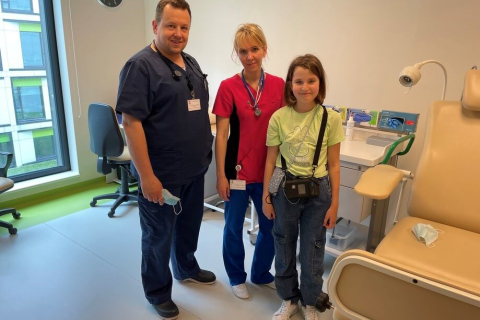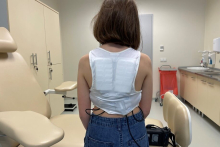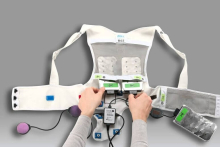- The girl in our care is the youngest patient in Poland to date to be fitted with a WDC vest. She is also the first patient (among both adults and children) in whom the vest was used as a bridge to heart transplant. This novel method of preventing sudden cardiac death was implemented in our department by Dr. Piotr Wieniawski and Dr. Katarzyna Luczak-Wozniak. They benefited from the experience of Prof. Marcin Garbowski, head of the First Chair and Department of Cardiology MUW, who used the WDC vest in adult patients - reports Prof. Bozena Werner, head of the Department of Pediatric Cardiology and General Pediatrics MUW.
With the vest, the high risk of sudden cardiac death in patients with potentially life-threatening cardiac arrhythmias is minimized. This method also avoids the invasive implantation of a defibrillation system - transvenous or percutaneous, life-saving, but fraught with the risk of complications of both the procedure itself and the anesthesia.
The WCD combines elements of an ECG monitor, a fully automatic external defibrillator and a web-based system for remote patient monitoring. The purpose of the device is to protect patients at risk of sudden cardiac death. The technology is recommended as a temporary therapy when, for various reasons, implantation of a cardioverter-defibrillator is not clearly justified.
The external cardioverter defibrillator takes the form of a flexible vest. The patient wears it directly on the body. The vest has an external diagnostic and therapeutic system, which consists of a set of three defibrillation electrodes and four ECG electrodes, as well as a monitor that manages their operation. An additional component is a modem (along with a charger) for data transfer. The purpose of the system is to detect rapid life-threatening ventricular arrhythmias and automatically defibrillate if necessary. Unlike implantable devices, the patient has the option to delay the therapy if the detected arrhythmia is tolerated by him and he remains conscious. The external cardioverter defibrillator is also distinguished by the fact that no component of the system requires implantation. This is significant, given the temporary nature of the solution.
Poland is the first country in Central and Eastern Europe where WCD technology has been made commercially available. In selected cases, individual billing and reimbursement is already possible.
Defibrillation vest used for the first time in Poland on a child awaiting heart transplantation
A 10-year-old girl was given a wearable cardioverter-defibrillator (WCD) vest at the Department of Pediatric Cardiology and General Pediatrics MUW. The little patient suffers from dilated cardiomyopathy, heart failure and complex ventricular arrhythmia. She is qualified for an emergency transplant. Until transplantation, the vest will minimize the risk of sudden cardiac death.


